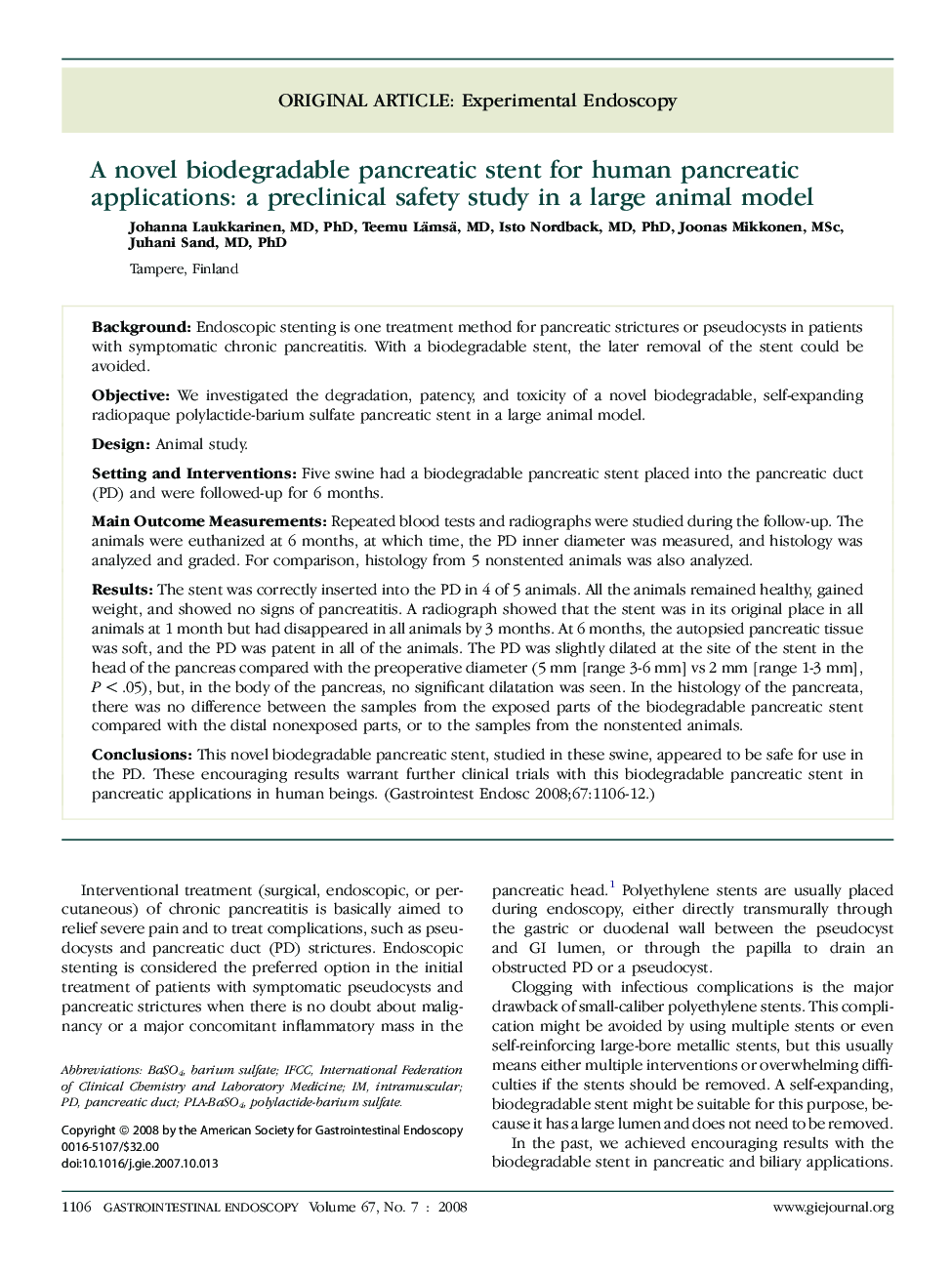| Article ID | Journal | Published Year | Pages | File Type |
|---|---|---|---|---|
| 3308452 | Gastrointestinal Endoscopy | 2008 | 7 Pages |
BackgroundEndoscopic stenting is one treatment method for pancreatic strictures or pseudocysts in patients with symptomatic chronic pancreatitis. With a biodegradable stent, the later removal of the stent could be avoided.ObjectiveWe investigated the degradation, patency, and toxicity of a novel biodegradable, self-expanding radiopaque polylactide-barium sulfate pancreatic stent in a large animal model.DesignAnimal study.Setting and InterventionsFive swine had a biodegradable pancreatic stent placed into the pancreatic duct (PD) and were followed-up for 6 months.Main Outcome MeasurementsRepeated blood tests and radiographs were studied during the follow-up. The animals were euthanized at 6 months, at which time, the PD inner diameter was measured, and histology was analyzed and graded. For comparison, histology from 5 nonstented animals was also analyzed.ResultsThe stent was correctly inserted into the PD in 4 of 5 animals. All the animals remained healthy, gained weight, and showed no signs of pancreatitis. A radiograph showed that the stent was in its original place in all animals at 1 month but had disappeared in all animals by 3 months. At 6 months, the autopsied pancreatic tissue was soft, and the PD was patent in all of the animals. The PD was slightly dilated at the site of the stent in the head of the pancreas compared with the preoperative diameter (5 mm [range 3-6 mm] vs 2 mm [range 1-3 mm], P < .05), but, in the body of the pancreas, no significant dilatation was seen. In the histology of the pancreata, there was no difference between the samples from the exposed parts of the biodegradable pancreatic stent compared with the distal nonexposed parts, or to the samples from the nonstented animals.ConclusionsThis novel biodegradable pancreatic stent, studied in these swine, appeared to be safe for use in the PD. These encouraging results warrant further clinical trials with this biodegradable pancreatic stent in pancreatic applications in human beings.
